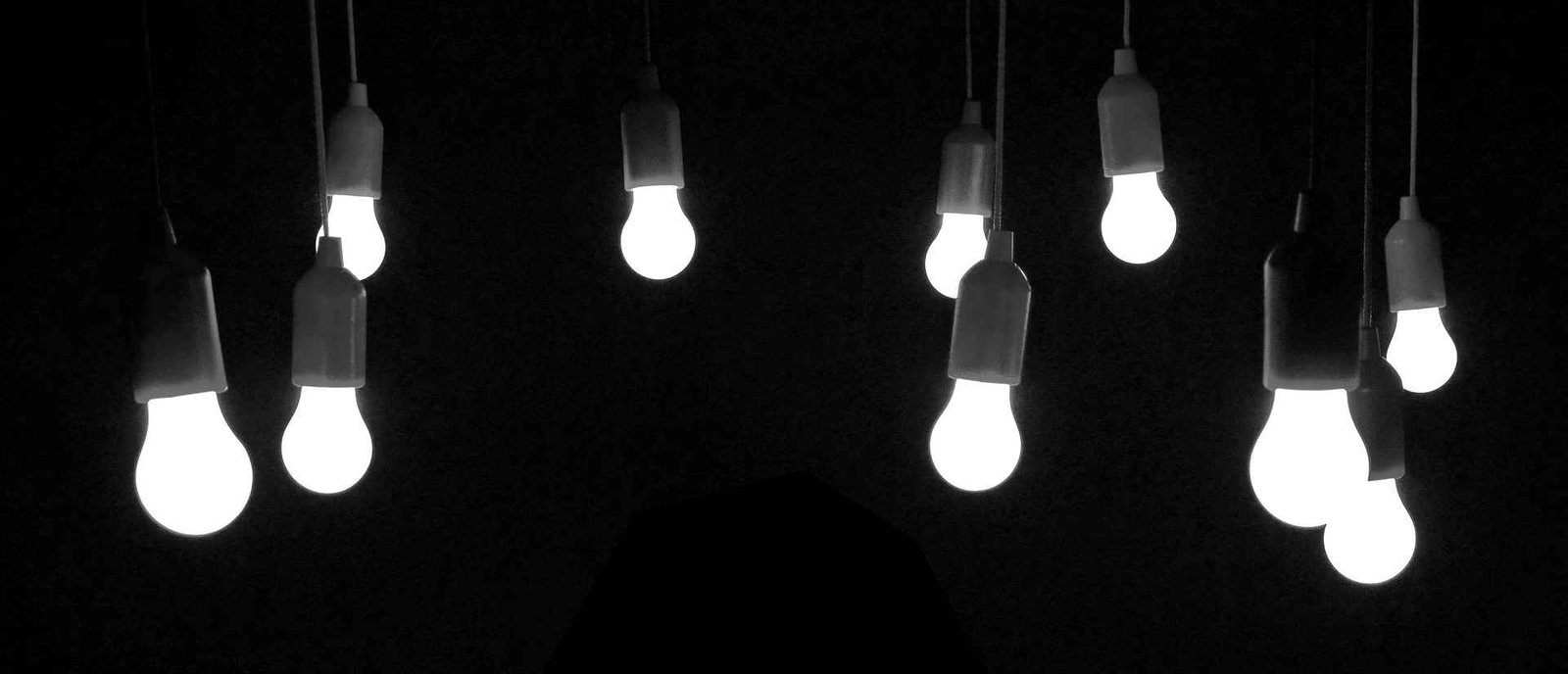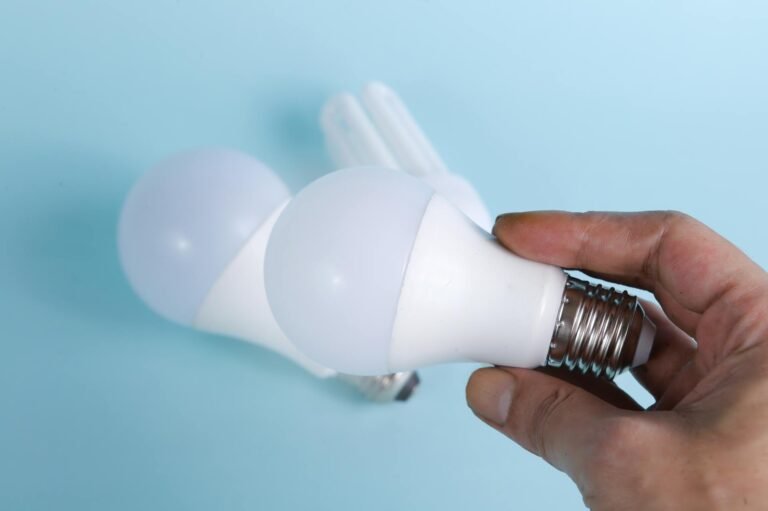Why Is My LED Light Buzzing? Complete Guide to Fixing Noisy Bulbs

You’re trying to focus on work, enjoy a quiet evening, or concentrate on an important task when suddenly there’s this annoying buzzing sound coming from overhead. You look up, and sure enough, your LED light is the culprit. That persistent hum can drive anyone up the wall, especially when you’re trying to create the perfect workspace atmosphere.
The good news? A buzzing LED light isn’t some mysterious phenomenon that you have to live with forever. Understanding why your lights are making noise and knowing how to fix the issue can save your sanity and create the peaceful environment you deserve.
What Causes a Buzzing LED Light?
When your LED light is buzzing when turned regularly, several factors could be at play. Unlike the gentle hum we might have grown accustomed to with older incandescent bulbs, LED lights should operate virtually silently. When they don’t, it’s usually telling us something important about our electrical setup or the quality of our lighting components.
The most common reason behind a buzzing light involves the relationship between your LED bulb and its power source. LEDs require specific electrical conditions to operate smoothly, and when those conditions aren’t met, the result is often an audible complaint from your lighting fixture.
Electrical Incompatibility Issues
The relationship between your LED bulbs and dimmer switches can be particularly troublesome. Many homes still have older dimmer switches designed for incandescent bulbs, which operate on completely different principles than modern LEDs. When you connect an LED to an incompatible dimmer, the electrical mismatch creates vibrations that manifest as that annoying buzz.
Traditional dimmers work by rapidly switching the power on and off to control brightness, but they do so at frequencies that can cause LED drivers to vibrate. Think of it like trying to play a modern video game on an old console – the hardware just wasn’t designed to work together harmoniously.
Power Supply Problems
Your home’s electrical supply quality plays a huge role in LED performance. Voltage fluctuations, electrical noise from other appliances, and inconsistent power delivery can all cause your LED lights to buzz. This is especially common in older homes where the electrical system hasn’t been updated to handle modern energy-efficient lighting.
When the power coming to your LED isn’t clean and stable, the internal components work overtime to regulate the electricity, creating heat and vibrations that you hear as buzzing sounds.
Types of LED Light Buzzing Sounds
Not all buzzing sounds are the same, and the type of noise your LED makes can actually help diagnose the problem. We’ve found that different sounds often point to specific issues, making troubleshooting much more straightforward.
The Steady Hum
A constant, low-frequency hum usually indicates an issue with the LED driver or power supply compatibility. This steady drone is often the result of electromagnetic interference or a mismatch between your LED and the electrical system it’s connected to.
Intermittent Buzzing
If your buzzing LED light bulb only makes noise occasionally, you might be dealing with temperature-related expansion and contraction of components, or electrical fluctuations that come and go based on other electrical usage in your home.
High-Pitched Whining
A sharp, high-frequency whine often suggests issues with the LED driver’s internal components, particularly the capacitors or transformers that regulate power within the bulb itself.
Common Culprits Behind Noisy LEDs
Here are the most frequent troublemakers we encounter:
Incompatible Dimmer Switches
This is hands down the most common cause of buzzing LED lights. Standard incandescent dimmers use a technology called phase cutting, which essentially chops up the electrical waveform to reduce brightness. LEDs don’t appreciate this rough treatment, and their drivers often respond with audible protests.

LED-compatible dimmers use different technologies specifically designed to work with modern lighting. These specialized switches communicate more gently with LED drivers, eliminating the harsh electrical transitions that cause buzzing.
Poor Quality LED Drivers
The driver is essentially the brain of your LED light, converting your home’s AC power into the DC power that LEDs need. Cheap or poorly designed drivers often cut corners on components that suppress electrical noise and vibrations.
Quality LED drivers include better filtering components and more robust construction that naturally eliminates buzzing. This is why you’ll often find that premium LED bulbs operate silently while budget options can sound like electronic cicadas.
Electrical System Issues
Sometimes the problem isn’t with your LED at all, but with your home’s electrical infrastructure. Loose connections, overloaded circuits, and poor grounding can all create conditions that make LEDs buzz. USB powered desk lights can be an excellent alternative if you’re dealing with persistent electrical issues that affect your main lighting.
How to Fix a Buzzing LED Light
The solution to your noisy LED depends on identifying the root cause, but here are the most effective approaches we’ve found:
Replace Your Dimmer Switch
If you’re using LEDs with an older dimmer switch, this should be your first move. Look for dimmers specifically labeled as “LED compatible” or “LED/CFL.” These modern switches use different circuitry designed to work harmoniously with LED technology.
When shopping for a new dimmer, check the manufacturer’s compatibility list to ensure it works with your specific LED bulbs. Some dimmers even offer adjustment features that let you fine-tune the electrical output to eliminate buzzing completely.
Upgrade to Quality LED Bulbs
Not all LEDs are created equal, and this becomes painfully obvious when cheaper bulbs start making noise. The best dimmable LED desk lamps often use higher-quality components that operate silently, making them worth the investment for workspace applications.
Look for LED bulbs from reputable manufacturers that specifically mention “quiet operation” or “noise-free” in their specifications. These bulbs typically use better drivers and more sophisticated components that naturally suppress electrical noise.
Check Your Electrical Connections
Loose connections can cause electrical arcing and fluctuations that make LEDs buzz. Have an electrician inspect your fixtures, especially if multiple LEDs in the same area are making noise. Sometimes something as simple as tightening a connection can eliminate buzzing entirely.
LED vs Traditional Lighting: Noise Comparison
| Light Type | Typical Noise Level | Common Causes | Fix Difficulty |
|---|---|---|---|
| Incandescent | Silent to slight hum | Filament vibration (rare) | Easy |
| CFL | Moderate buzz | Ballast issues | Medium |
| LED (Poor Quality) | Noticeable buzz | Driver issues, incompatibility | Easy to Medium |
| Halogen | Silent to slight hum | Transformer buzz (rare) | Medium |
This comparison shows why the transition to LEDs has been so significant for creating peaceful indoor environments. When properly installed and matched with compatible components, LEDs should be virtually silent – much quieter than the fluorescent lights they often replace.
The key difference lies in how each technology produces light. Incandescent bulbs simply heat a filament until it glows, while LEDs use complex electronic drivers to power semiconductor chips. This electronic complexity means more opportunities for noise, but also more opportunities for manufacturers to engineer quiet operation.
When LED Buzzing Indicates Bigger Problems
While most LED buzzing is simply annoying, certain situations warrant more immediate attention. Understanding when a buzzing light might indicate electrical safety issues can help protect your home and family.
Electrical Safety Concerns
If your LED buzzing is accompanied by flickering, dimming, or other lights in the same circuit acting strangely, you might have electrical problems that go beyond simple compatibility issues. Our article on LED light flickering explores related symptoms that could indicate serious electrical problems.
Buzzing combined with a burning smell, warm fixtures, or any visible sparking requires immediate attention from a qualified electrician. These symptoms can indicate dangerous electrical conditions that pose fire risks.
Multiple Fixtures Buzzing
When several LED fixtures start buzzing simultaneously, especially if they’re on different circuits, this often points to broader electrical system issues. Power quality problems, electrical panel issues, or problems with your utility connection can all cause widespread LED buzzing.

Prevention Tips for Silent LED Operation
The best approach to LED buzzing is preventing it from happening in the first place. Here are strategies that can help ensure your LEDs operate quietly from day one:
Choose Compatible Components
Before installing any LED lighting system, verify that all components are designed to work together. This includes checking dimmer compatibility, ensuring proper voltage ratings, and selecting quality fixtures that provide stable mounting for LED bulbs.
Invest in Quality
While it might be tempting to choose the cheapest LED options available, investing in quality components often pays off in quiet, reliable operation. Premium LED bulbs typically use better drivers, more robust construction, and superior components that naturally eliminate buzzing.
Professional Installation
For whole-home LED conversions or complex lighting systems, professional installation can ensure proper electrical connections and component compatibility. Electricians familiar with LED technology can spot potential buzzing issues before they become problems.
Advanced Troubleshooting Techniques
When basic solutions don’t resolve LED buzzing, more advanced troubleshooting might be necessary. These techniques can help identify and resolve stubborn buzzing problems:
Load Balancing
Some dimmers require a minimum electrical load to operate properly. If you’re using low-wattage LEDs on a dimmer designed for higher-wattage incandescent bulbs, adding more LED fixtures to the same circuit or installing a load resistor might eliminate buzzing.
Electrical Filtering
In environments with particularly poor power quality, adding electrical filters or surge protectors designed for sensitive electronics can clean up the power supply enough to eliminate LED buzzing.
Component Isolation
Sometimes isolating the buzzing source requires systematically testing different combinations of bulbs, fixtures, and switches. This process can help identify whether the problem lies with a specific component or a combination of incompatible parts.
LED Lighting for Different Spaces
The solutions for buzzing LEDs can vary depending on where you’re using them. Different spaces have different electrical requirements and tolerance levels for noise:
Workspace Lighting
In office environments and home workspaces, even minor buzzing can be incredibly distracting. Desk lamps for video calls typically prioritize silent operation alongside good lighting quality, making them excellent choices for professional environments where concentration is crucial.
Living Areas
Living rooms and common areas might be more forgiving of slight LED buzzing, but persistent noise can still detract from relaxation and entertainment. The key is finding the right balance between cost and performance for your specific needs.
Bedroom Applications
Bedroom lighting requires absolute quiet operation, especially for bedside lamps and overhead fixtures that operate during quiet evening hours. Smart timer table lamps offer sophisticated control options that can help minimize electrical stress on LED components while providing convenient automation.
FAQ
Why is my LED light buzzing only when dimmed?
LED buzzing during dimming typically indicates incompatibility between your LED bulb and dimmer switch. Most standard dimmers were designed for incandescent bulbs and use phase-cutting technology that can cause LED drivers to vibrate and create noise. The solution is upgrading to an LED-compatible dimmer specifically designed to work with modern LED technology.
Can a buzzing LED light be dangerous?
In most cases, LED buzzing is simply annoying rather than dangerous. However, buzzing accompanied by burning smells, visible sparking, warm fixtures, or other electrical symptoms can indicate serious electrical problems that require immediate professional attention. Basic buzzing from component incompatibility poses no safety risk.
Will LED buzzing damage my electrical system?
Standard LED buzzing from compatibility issues won’t damage your electrical system or other appliances. The noise comes from vibrations within the LED driver or fixture components, not from electrical problems that could affect other parts of your home’s electrical system. However, underlying electrical issues that cause buzzing might need addressing.
Do all cheap LED bulbs buzz?
Not all inexpensive LED bulbs will buzz, but budget options are more likely to use lower-quality drivers and components that can create noise. The buzzing tendency depends more on the quality of the internal driver circuitry than the overall price, though premium bulbs typically use better components that operate more quietly.
How can I tell if my dimmer switch is LED compatible?
LED-compatible dimmers are usually clearly labeled as such on the packaging and switch itself. Look for terms like “LED/CFL compatible,” “LED dimmer,” or specific compatibility certifications. If you’re unsure, check the manufacturer’s website for compatibility information or consult the documentation that came with your LED bulbs.
Conclusion
Dealing with a buzzing LED light doesn’t have to be a source of endless frustration. Understanding the causes behind LED noise empowers you to choose the right solutions and create the peaceful, well-lit spaces you deserve. Whether it’s upgrading to LED-compatible dimmers, investing in higher-quality bulbs, or addressing electrical compatibility issues, most LED buzzing problems have straightforward solutions.
Remember, modern LED technology is designed to operate silently, so persistent buzzing usually means something needs attention. With the right approach and quality components, you can enjoy all the benefits of LED lighting – energy efficiency, longevity, and excellent light quality – without the soundtrack of electronic complaints. Your ears (and your electricity bill) will thank you for making the switch to properly configured, quietly operating LED lighting systems.
Looking for more? Check out our desk lighting category for more articles and guides that may interest you!
Featured image credit: Image by Klaus Hausmann from Pixabay
This content is for informational purposes only. Please verify current information directly on the retailer’s site before purchasing.






